Inside: In part 3 of this 4-part series, you’ll learn how to turn kindergarten routines, such as calendar time, into monthly rituals that build community and provide children with a sense of connection. Part 1 explores daily rituals, part 2 weekly rituals and part 4 seasonal rituals.
Welcoming a New Month
When a new month rolls around, it’s like opening a big package filled with favorite books, songs, and projects that I am excited to share with my kiddos. Each December, we read The Gingerbread Man, design and build toy boats to help him cross the river, learn how to make gingerbread and eat cookies! These intentional, well-planned experiences, feel like old familiar friends that I am excited to visit again and again.
It’s common practice, in many classrooms, to welcome a new month during calendar time. But there are also ways to recognize this transition beyond calendar time as you say hello to one month and goodbye to another. Read on to find ideas for both, using classroom rituals that create connection and build community among your students.

In part 1 of this series, I wrote about the difference between a routine and a ritual and highlighted 3 ways to create rituals as described by Jacky Howell and Kimberly Reinhard in their book Rituals and Traditions. In part 2, I shared routines built around the weekly cycle.
In this post, we’ll move beyond daily rituals and look at some intentional ways that you might “untie the bow” on each new month with your children.
During Calendar Time
Out With the Old, In With the New: One advantage of a paper vs. a digital calendar, is that children can help you take down the old month and put up the new one. This provides an opportunity for a fun ritual, as well as an opportunity to show them how the calendar year fits together. I’ve used paper calendars (think desk blotters) where we tore off the old page and crumpled it up (they love this!) and dry erase calendars where we “wiped” the old month away. Or if you are using calendar cards in a pocket chart, you can involve the children in taking down the old calendar and putting up the new one and even helping you create the cards. (These calendar cards include a student-created version.) No matter which type of calendar you use, think of an “out with the old, in with the new,” ritual that you can use to symbolize the change from one month to the next.
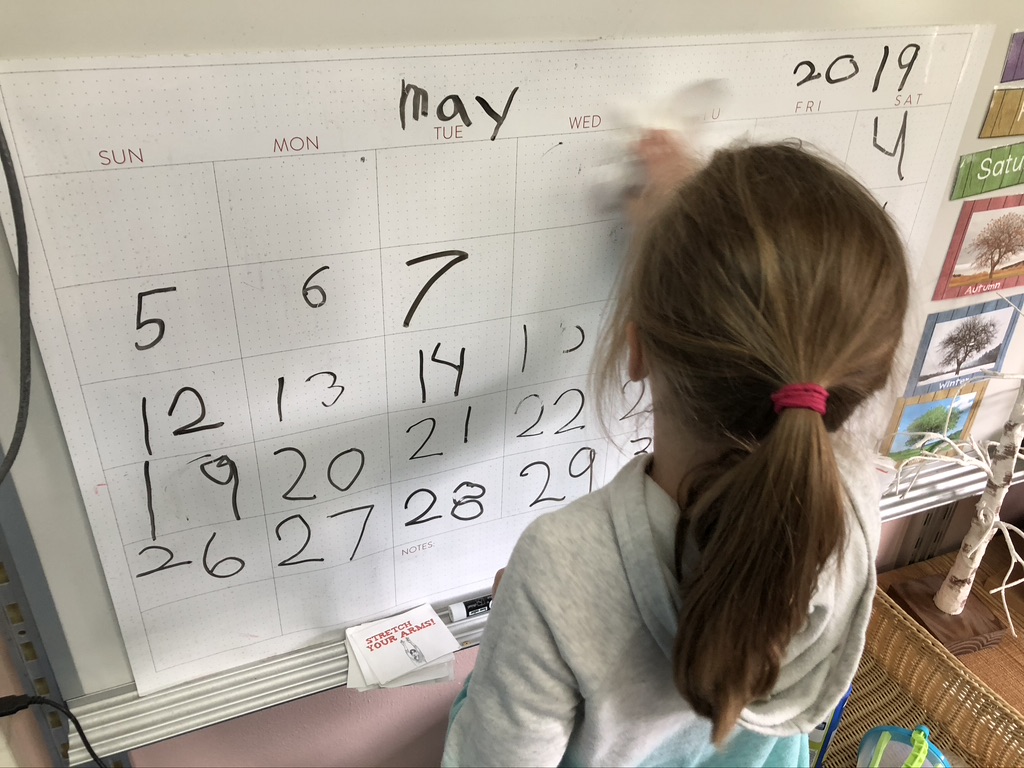
What’s in a Name?: Each new month has its own special name that I use to teach a few quick literacy activities. I begin by holding up the new name and asking them to tell me what they notice about it. In September, they might just say, “It has an e in it,” but as I teach into this and their skills grow, they share things like the number of letters it has, capital letter at beginning, short or long vowel sounds, etc.
Next, I hold it up next to the name of the previous month and they have to tell me how the words are the same and different.
Whose Birthday Month?: Above our calendar hangs our Birthday Banner where we can easily see which children are born in each month. On the first day, we remove each child’s birthday pendant, and tape it to the corresponding calendar date.
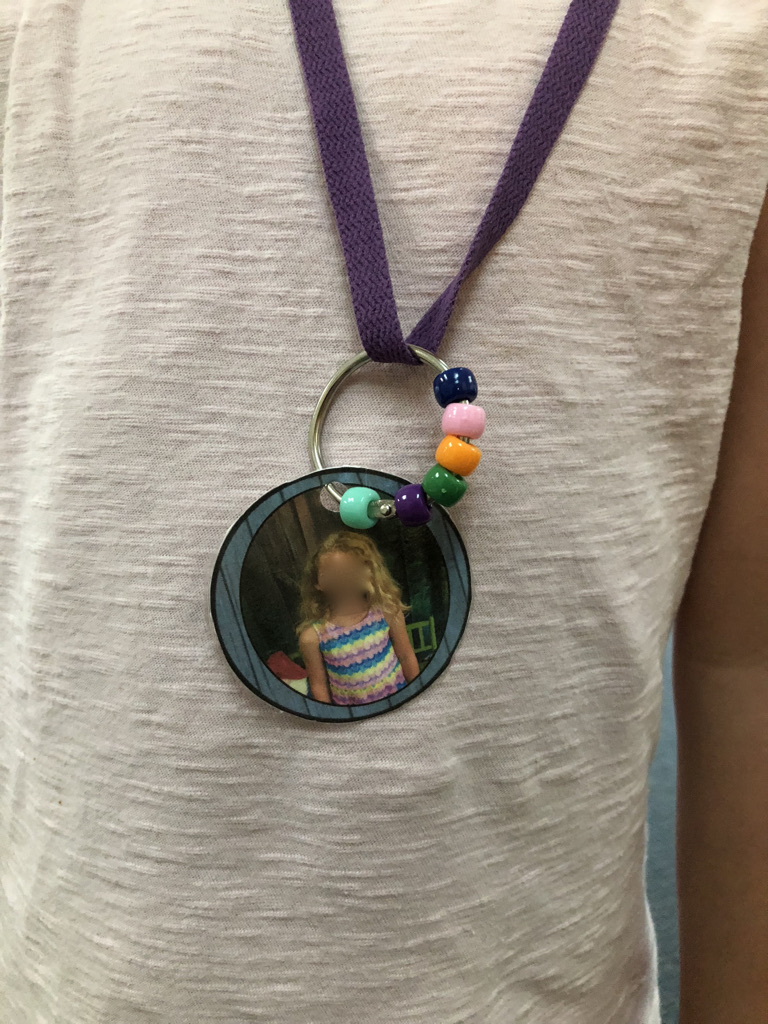
We look to see if their birthdays fall on a weekday or a weekend. Then we sing this song to the tune of The More We Get Together.
Here we are in September, September, September,
Here we are in September,
Whose birthday is next?
Children look at the calendar and tell whose birthday comes first in the month and how many days it is until their special day. Then, we count backwards from that day until we get to 1. We repeat this for all of the birthdays that occur that month.
What’s Special About This Month?: Each month has its own unique “flavor,” and we explore that using the book, A Child’s Calendar by John Updike. The illustrations are beautiful and children tell what they see, think, and wonder about the picture and then we read the monthly poem.
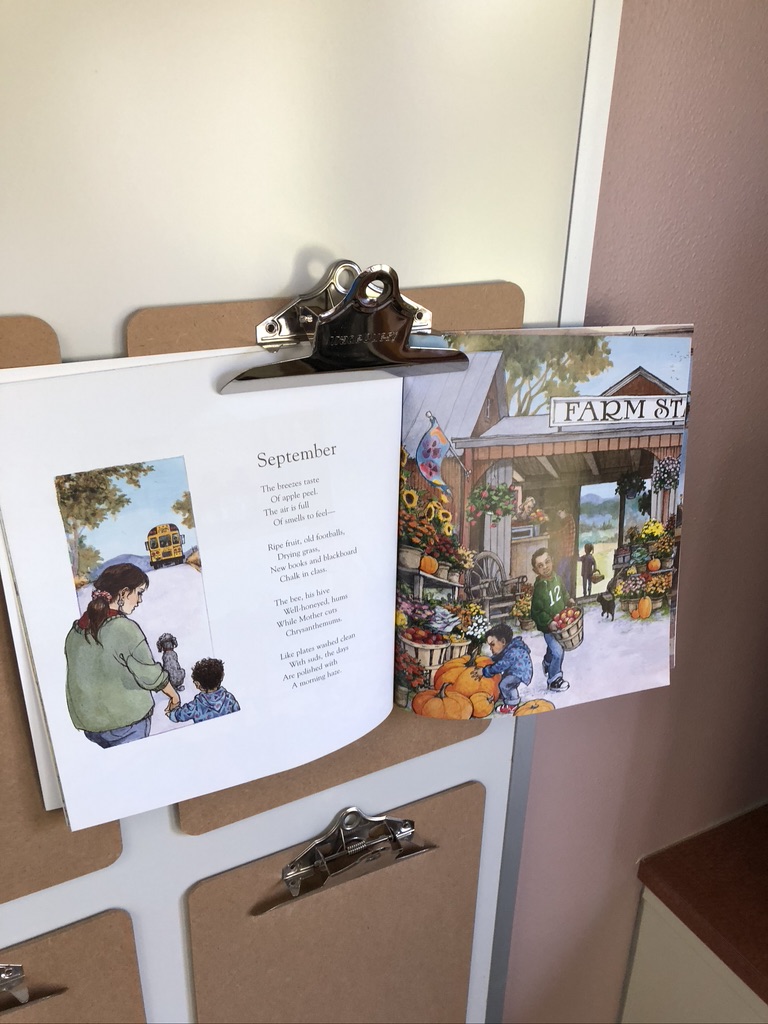
I then share that month’s poster that asks children, “What’s in September that you like to do?” and the kids do a turn and talk and share what they look forward to in the month ahead.
Special Days and Events: I then spend a few minutes previewing the month and sharing any upcoming holidays or special events. Children draw pictures or symbols to represent these special days to help us track when they are coming up.
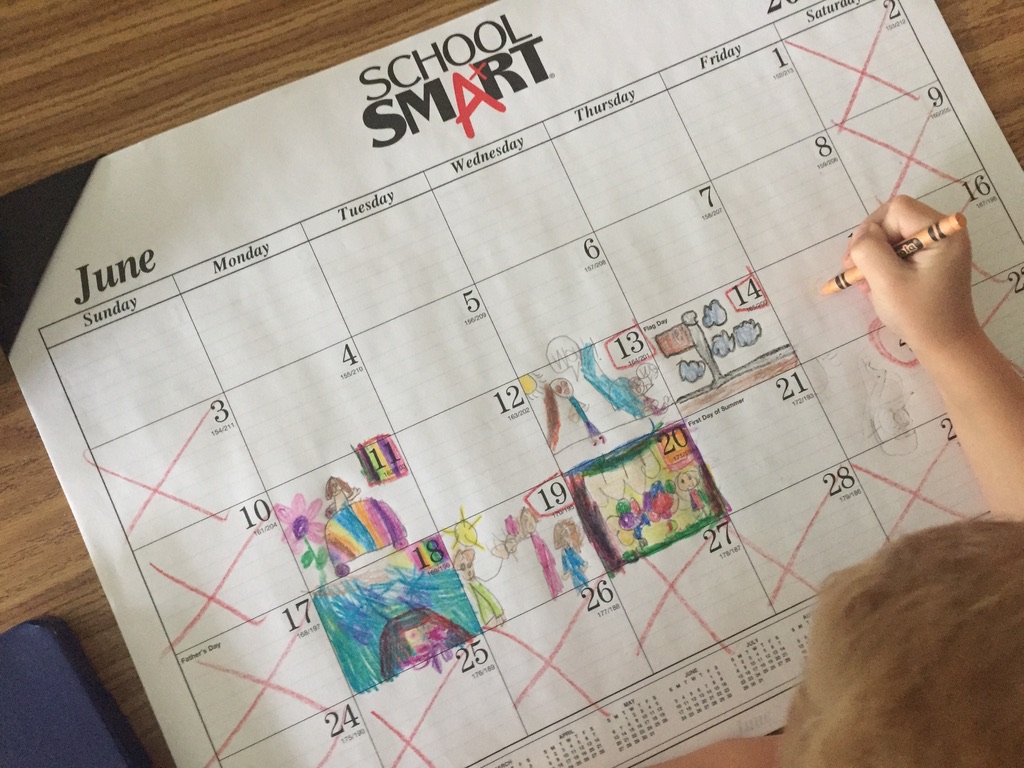
Beyond Calendar Time
Transition Rhymes: Each month, I roll out a new set of transition rhymes that include a hands-in-your lap rhyme, line-up song, call-back, and class cheer. This brings novelty to our days and the children look forward to learning each new monthly rhyme.
Birthday Celebrations: There are several rituals we use to celebrate and honor the birthday child and you can find them by reading, How We Celebrate Birthdays in Kindergarten. Each child has their own special day and we celebrate summer birthdays on half birthdays.
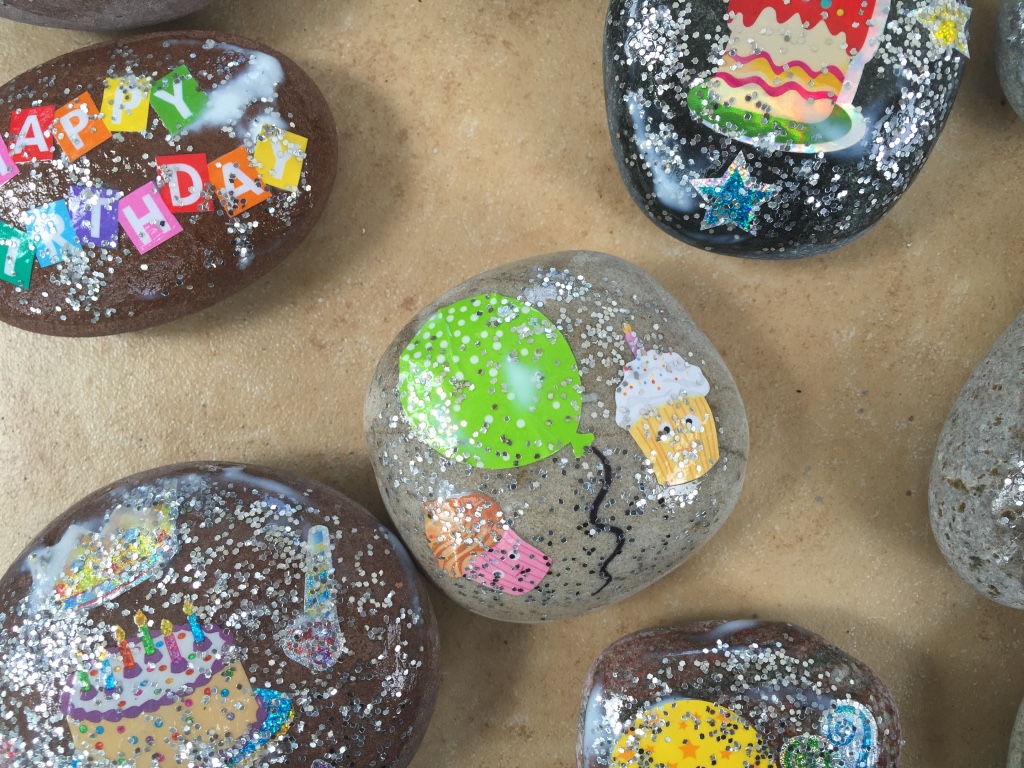
Full Moon Days: Every month brings its own full moon and each has a special name that children will enjoy learning. At the beginning of the year, we read, Next Time You See the Moon by Emily Morgan to help children learn about the phases of the moon. But then each month, we return to the book, When the Moon is Full: A Lunar Year by Mary Azarian to learn about the Native American names given to each moon and the meaning behind that. I encourage the kids to take a “full moon walk,” with their families that evening, something I did with my own kids when they were little.
Monthly Check-ins: At the beginning of each new month, I stop teaching small groups and devote that time to 1:1 conferences with kids. This provides an opportunity to administer assessments, look at their goals, provide feedback, and set new goals for the month. Returning to this regularly, is an enjoyable change of pace as I really enjoy 1:1 time with kids, and helps me avoid getting bombarded with lots of assessments right before report cards.
Book Swap: In my home, I have a bookshelf that is divided into ten sections. In each section, I store books that I might use during each month of the year. With each new month, I love flipping through the stacks and pulling out my favorites. I then display them on a special tiered bookshelf within my classroom and make them available to the children during morning choice time.
Center Swap: There are a few things I rotate in and out of our discovery centers each month, but most of my center materials are swapped out a bit more organically, such as when we begin a new math unit or a new inquiry. Those that I do change monthly, I prepped ahead of time many years ago, and so they are ready to go each month. These include sensory bins, play dough, and transient art. These three pictures show what I look forward to putting out for the children each January.
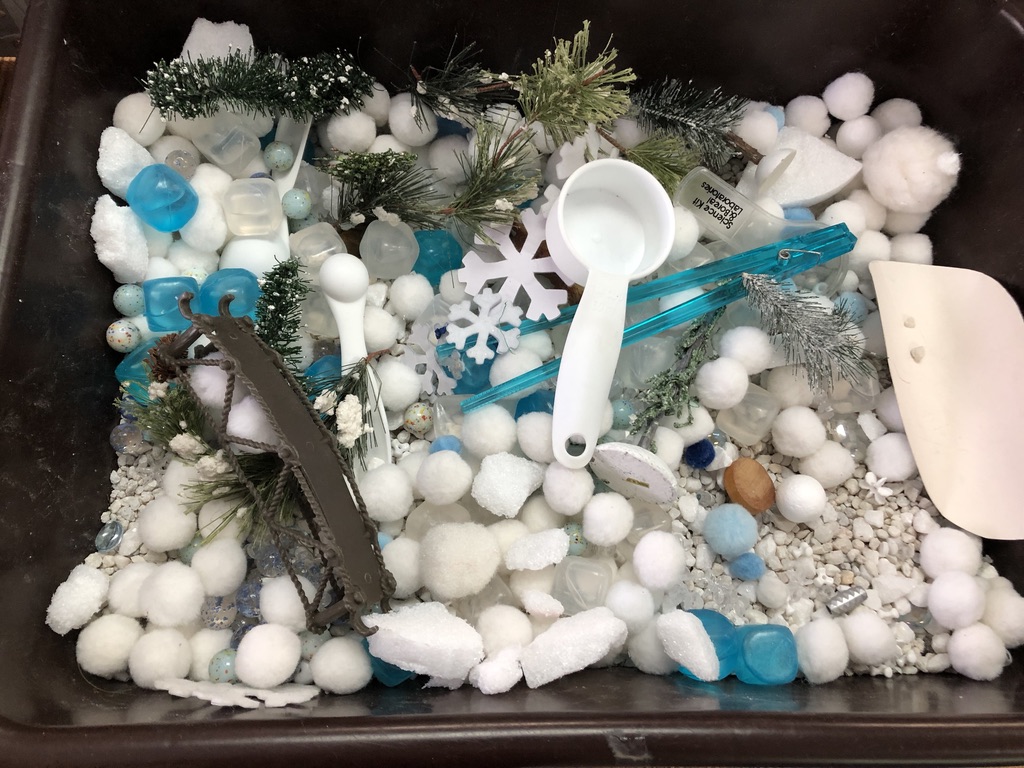
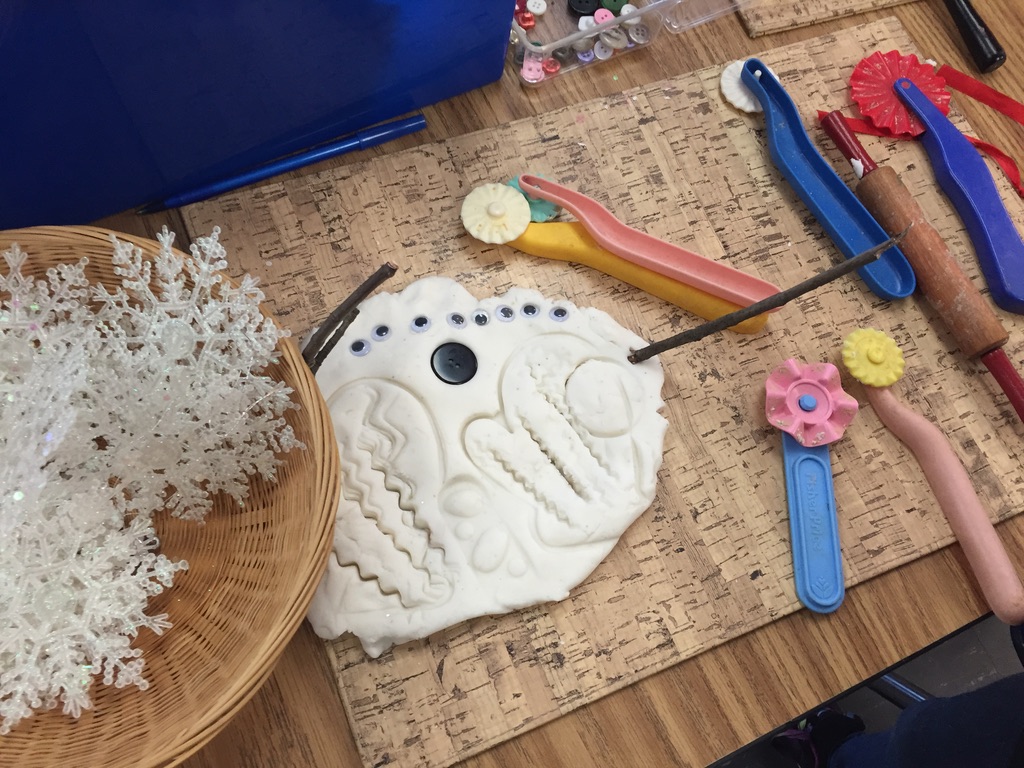
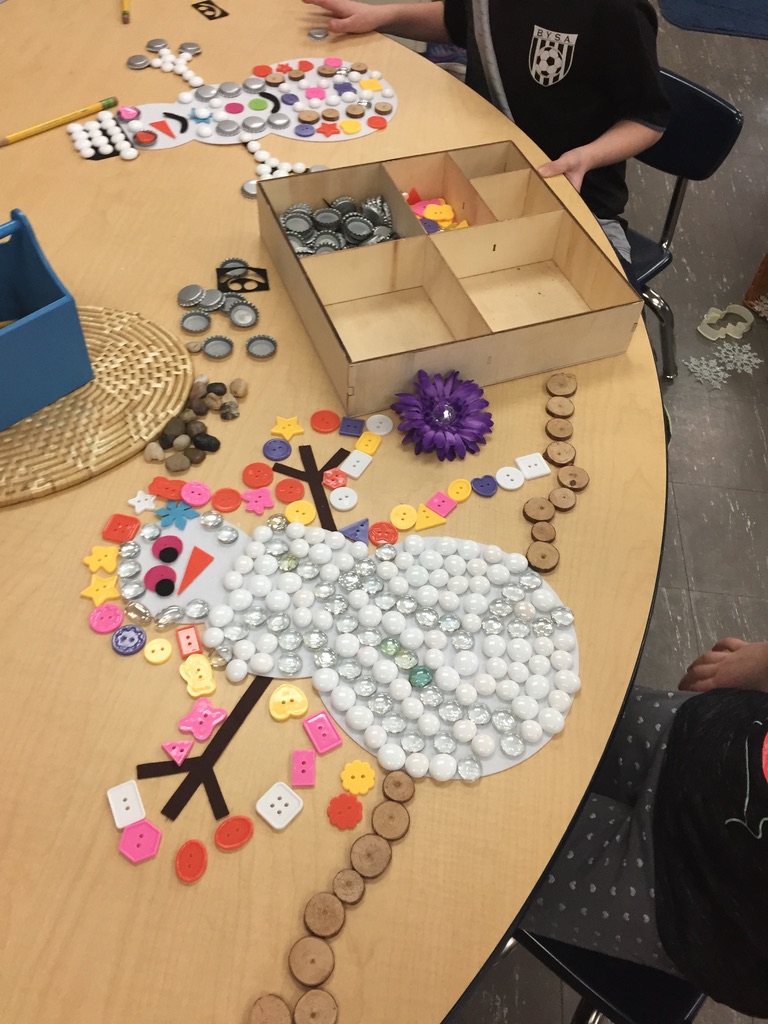
Looking Inside Each Month
In addition to the ways you might kick-off each month, there are unique opportunities within the month, built around favorite books, songs, projects, or activities, for creating rituals. These usually develop over a number of years and become your tried and true experiences that you look forward to repeating with children. In this way, many transform from a ritual to a tradition.
I’ve created a monthly binder, where I store bits and pieces of things that have happened repeatedly in that month. Things such as my favorite recipe for pumpkin play dough is in my October binder or a copy of the note we send home about snow pants is packed into November. It’s not beautifully organized, more random stuff stuck in the pockets, but it works for me.
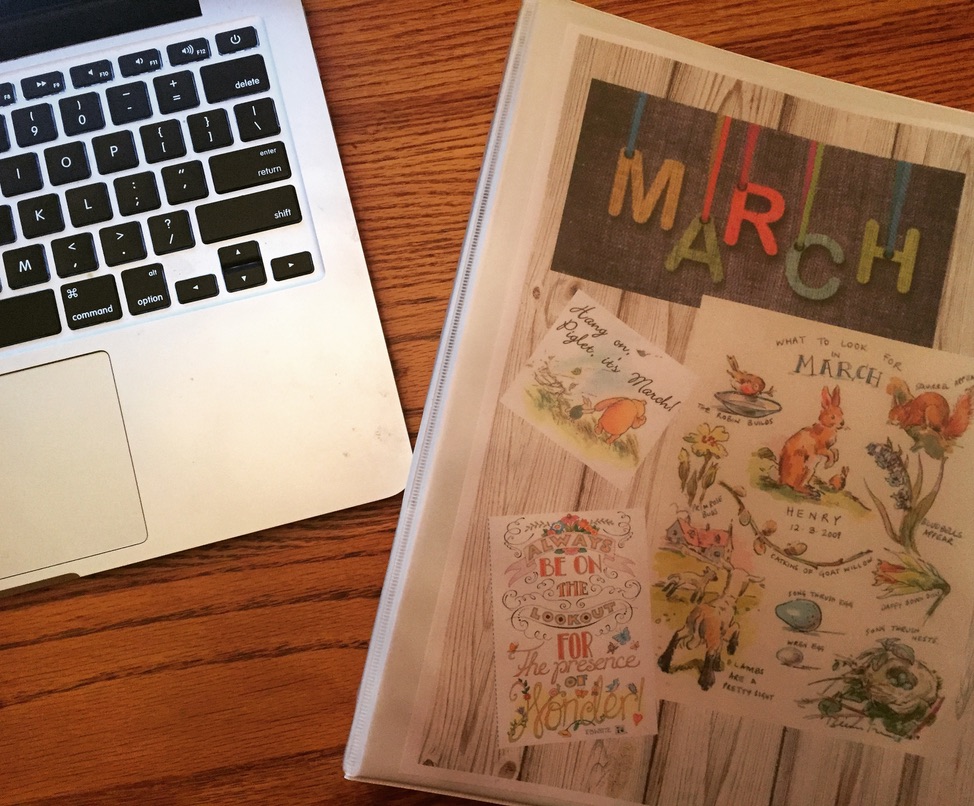
And it’s my own personal ritual to light a candle, brew a cup of tea, and look through it before the start of a new month. I also glance at the calendar to see what’s coming up both personally and professionally and make a running to do list of all that needs to be done.
Create Your Own Monthly Rituals
Use the ideas shared above to get you started thinking about the monthly rituals you want to create and carry out with your own class. And be on the lookout for them to show up organically as you move through the year with your kids.
The idea for “crumpling up the calendar,” came about when I tore off the old calendar page and gave it to a child to throw away. He quickly crumpled it into a ball and it took us all by surprise. The kids all looked at me to see what my reaction would be. “I like that,” I said. “It’s a great way to get rid of one month and begin a new one.”
If you are not sure where to start, begin by listing all of your calendar time routines. Then, ask yourself these questions to help you turn them into rituals:
- How can I be more intentional about how this routine is carried out?
- How can I individualize it with something that is meaningful to me or our class?
- Are there tools or materials that I could use to make it more meaningful, fun, or playful?
Next, think about what other rituals you might create that would extend beyond calendar time. You only need a few – the ideas listed above were done over a span of years and not every ritual is used with every school year. As the new month rolls around, you want to look forward to the change and and enjoy the rituals you’ve established with children, rather than feel overwhelmed by a long to-do list.
For help on creating your own classroom routines/rituals, download this free Routines and Rituals Toolkit and check out the Growing Traditions page in the Roots & Wings Resource Library.
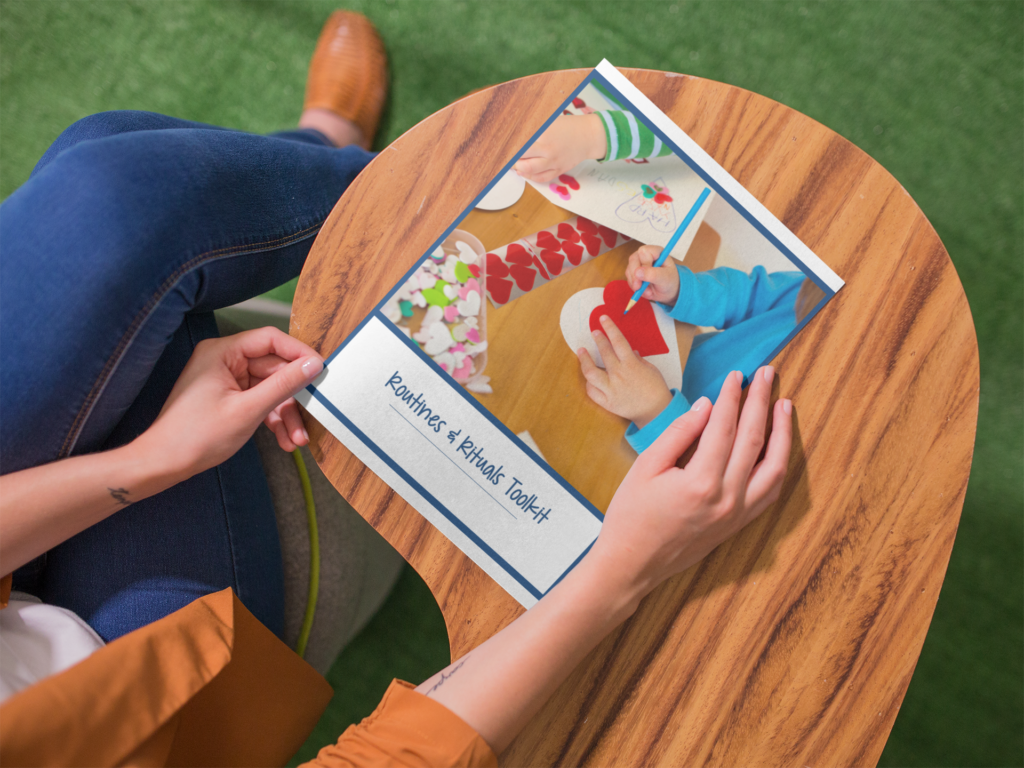
This post contains affiliate links. Roots & Wings is a participant in the Amazon Services LLC Associates Program, an affiliate advertising program designed to provide a means for sites to earn advertising fees by advertising and linking to Amazon.com.




 The 100th Day of School: How it All Began
The 100th Day of School: How it All Began My Favorite Kindergarten Holiday Craft
My Favorite Kindergarten Holiday Craft Meaningful Ways to Open and Close the Kindergarten Year
Meaningful Ways to Open and Close the Kindergarten Year How We Celebrate Birthdays in Kindergarten
How We Celebrate Birthdays in Kindergarten